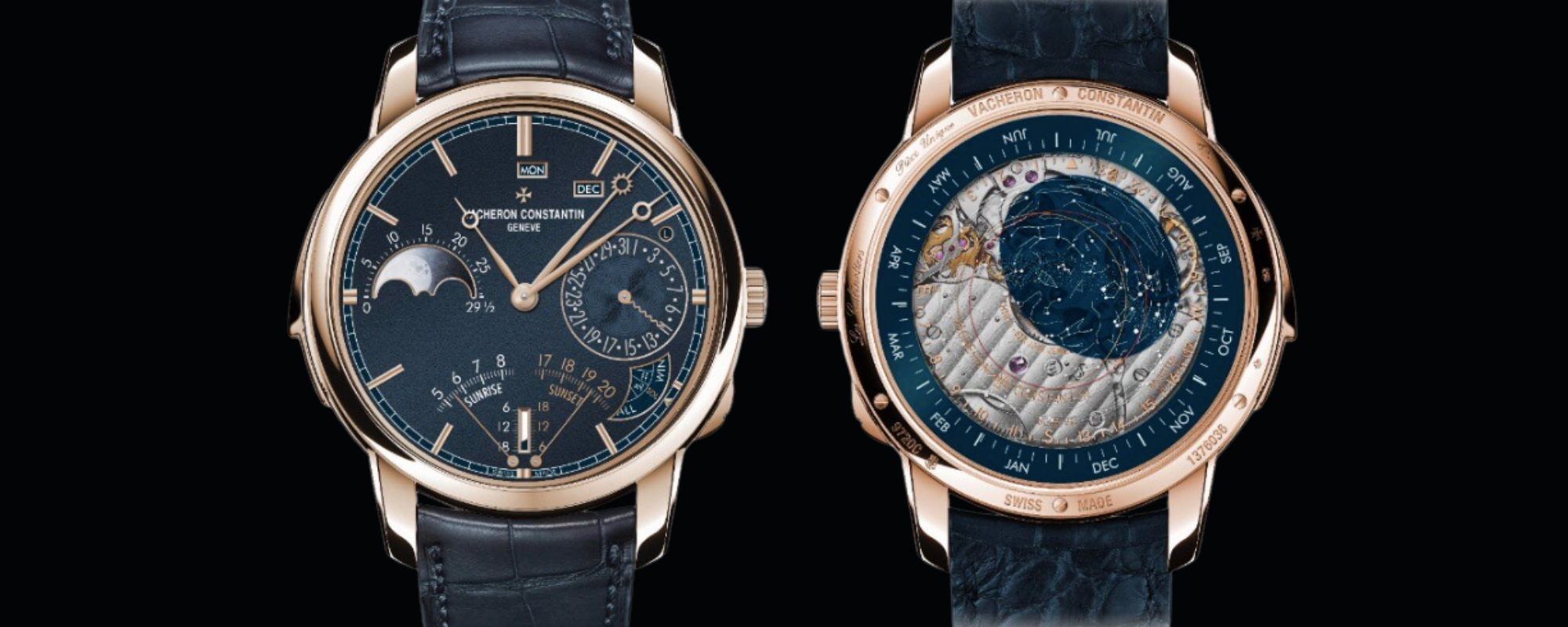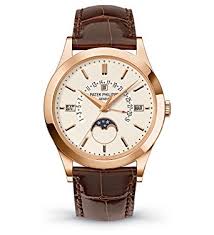Since ancient times, humanity has been fascinated by the depths of the starry sky, the precise movement of celestial bodies, the strict cycles of the Moon's phases — which govern the tides and ebbs of Earth's vast oceans — and many other wonders. If you are passionate about astronomy and want to stay up to date with what the Moon, solar activity, and eclipses have in store, then you simply need an astronomical wristwatch equipped with various functions tied to the cosmos 🪐
This is not just a typical chronometer ⌚ with complications that enhance timekeeping precision. It’s a watch featuring special mechanisms and dials designed to monitor astronomical phenomena 💫
The first astronomical clocks were created in Ancient Greece 🇬🇷 and China 🇨🇳 for observatory use. These devices helped model the Solar System 🌞🪐🛰️ based on existing knowledge and allowed study of how celestial rhythms affect physical and psychological human health 🧠💓
Later, the popularity of such complex accessories among astronomers, astrologers, and philosophers 🧙♂️🧭 was tied to the prevailing medieval worldview of a harmonious and perfectly organized Universe 🌀. During the Scientific Revolution, the manufacture Vacheron Constantin, founded in 1755 🏛️, turned its gaze to cosmic functions. Just 20 years after its foundation, it released its first watch featuring astronomical indications 🌠
🌠 The Cosmic World of Vacheron Constantin
Today, the prestigious Swiss brand Vacheron Constantin 🇨🇭 continues to unveil horological masterpieces 🎨, elevating them with every new model. Creating such timepieces demands immense craftsmanship 🛠️ and deep astronomical knowledge 📚—their mechanisms are built with extreme precision ⚙️ and are inextricably linked to celestial and cosmic processes 🌌
These watches are rare, and each individual example is considered a miniature masterpiece 🧩
The astronomical functions of Vacheron Constantin wristwatches are tied to the Gregorian calendar 📅 and include various indicators related to the movement of stars ✨. The main features are:
Calendars 📆 – Typically a date function, but unlike other brands that may require up to five manual adjustments per year, the perpetual calendar by Vacheron Constantin only needs one adjustment annually—on March 1st 🗓️
Moon Phases 🌖 – Display the full cycle of the Moon’s orbit: new moon, first quarter, full moon, last quarter.
Equation of Time ⏳ – Measures the difference between solar and standard time, ranging from -16 to +14 minutes due to Earth’s elliptical orbit and axial tilt 🌍
Sidereal Time 🪐 – The time it takes Earth to complete a 360° rotation. It differs from solar time and is used as the base for astronomical observation 🔭
Celestial Map 🗺️ – A flat representation of the sky from a given point on Earth, rotating once per year, offering a “snapshot” of the visible sky in real time 🌠
Additional high-level complications may include 🌒 solar and lunar eclipses, 🌌 ephemerides (solstices, equinoxes, seasons), 🌓 star positions, 🔯 zodiac signs, 🌅 sunrise/sunset times, and length of day and night.
🌟 The Vacheron Constantin Watchmaking Revolution
Although Vacheron Constantin has always embraced a classical, elegant approach to watch complications 🎩, its history includes groundbreaking innovations in astronomical watchmaking 🌠
The brand’s crown jewel is the Vacheron Constantin Solaria Ultra Grand Complication 2025 model 🌟. With this timepiece, the brand set a new record for the most complicated wristwatch in the world 🌍—featuring 41 complicationsspread across two dials 😲
Key functions include:
🔹 Five rare astronomical complications
🔹 Split-seconds chronograph ⏱️
🔹 Perpetual calendar with moon phases 🌔 and tide indicator 🌊
🔹 GMT indication 🌐 and world time
🔹 Minute repeater with Westminster chimes 🔔
All of this is packed into the new caliber 3655, housed in a 45 mm case crafted from 18-karat white gold 🪙, with a thickness of 14.99 mm.
The watch displays standard, solar ☀️, and sidereal time ✨—each managed via a separate gear train ⚙️
The central hands show:
Local time
World time 🌍
A second time zone at 3 o’clock
Solar and tropical time at 6 o’clock, with equation of time, zodiac signs ♈♉♊, and solar altitude
Sidereal time is displayed on the caseback.
The most spectacular function? Calculating the time remaining until a specific star or constellation appears in the sky 🌌⭐. The caseback is stylized as a starry dome 🌠, with color-coded chronograph hands at the center and a lunar age counter at 9 o’clock—accurate to within one correction every 122 years 😮!
🔧 Mechanical Excellence
The Solaria mechanism is a technical masterpiece 🎯: it measures 36 × 10.96 mm, and its plug-and-play system features two sapphire components that ensure energy efficiency and durability 🧩💎
For now, this extraordinary watch exists in a single unique piece. Its price is undisclosed 🤐, but experts estimate a seven-figure value 💰
📈 One thing is certain: this is a true investment-grade rarity.
🚀 Reaching for the Stars
Nearly every Vacheron Constantin model with cosmic functions is a marvel of engineering 🧠, with roots tracing back to the late 19th century.
Among the brand’s traditions are:
Full and triple calendars 📅
Retrograde indicators ↩️
The perpetual calendar 🕰️ — featured in the Patrimony, Traditionnelle, Overseas, and Twin Beat collections
The Twin Beat model contains two independent mechanisms with different rhythms. In “sleep mode,” the watch can operate for up to 65 days 💤🔋
🪐 For its 260th anniversary, the brand unveiled Les Cabinotiers Celestia Astronomical Grand Complication 3600 — a horological phenomenon with 23 complications on two dials and three gear trains to simultaneously display standard, solar, and sidereal time 🌞🌍🌌
💎 A Symbol of Timeless Craft and Value
Today, Vacheron Constantin watches represent:
✨ Luxury
⚙️ Craftsmanship
💰 Enduring investment value
Owning a Vacheron Constantin is a wise choice for both collectors 🧳 and investors 📊



